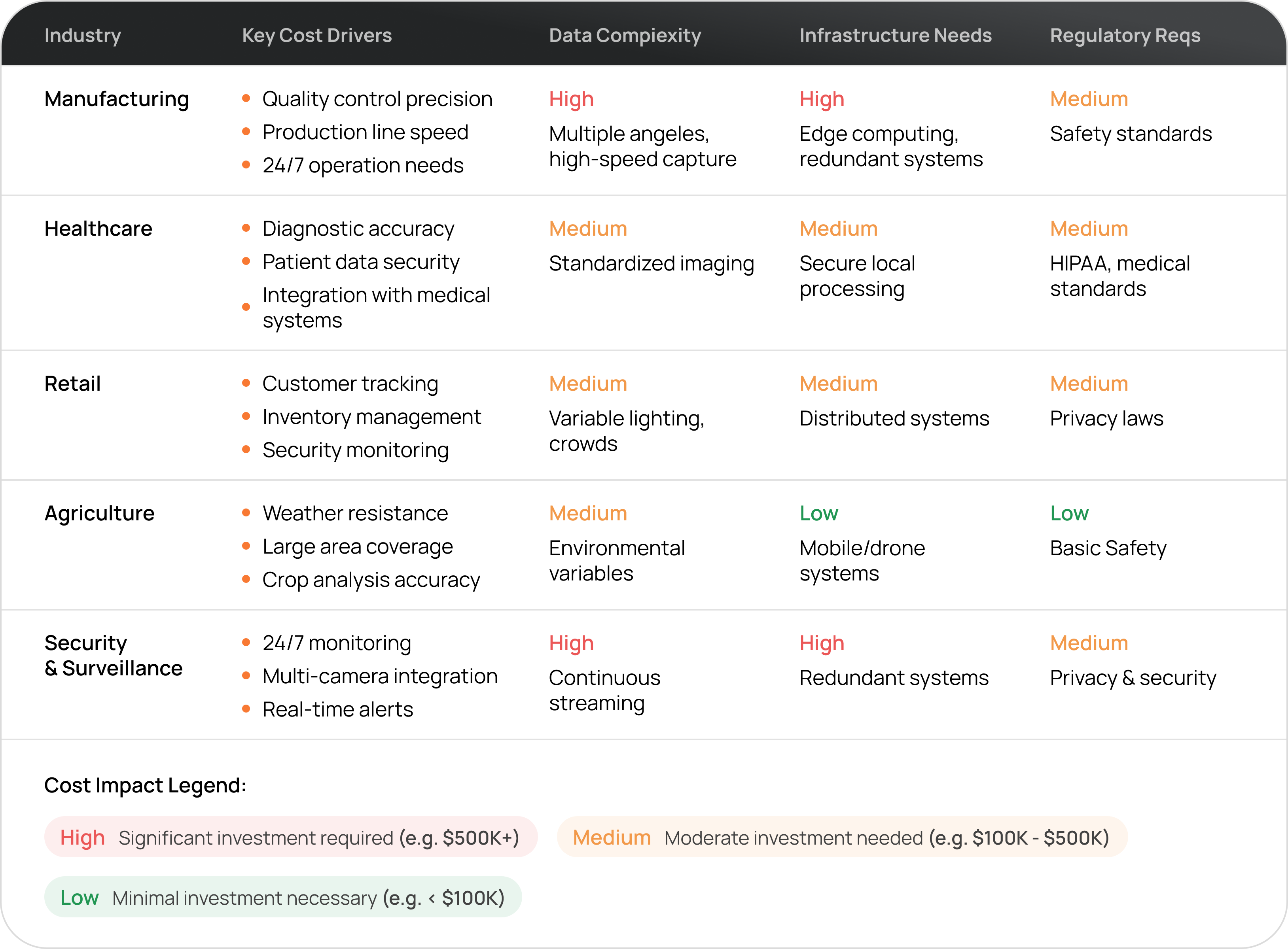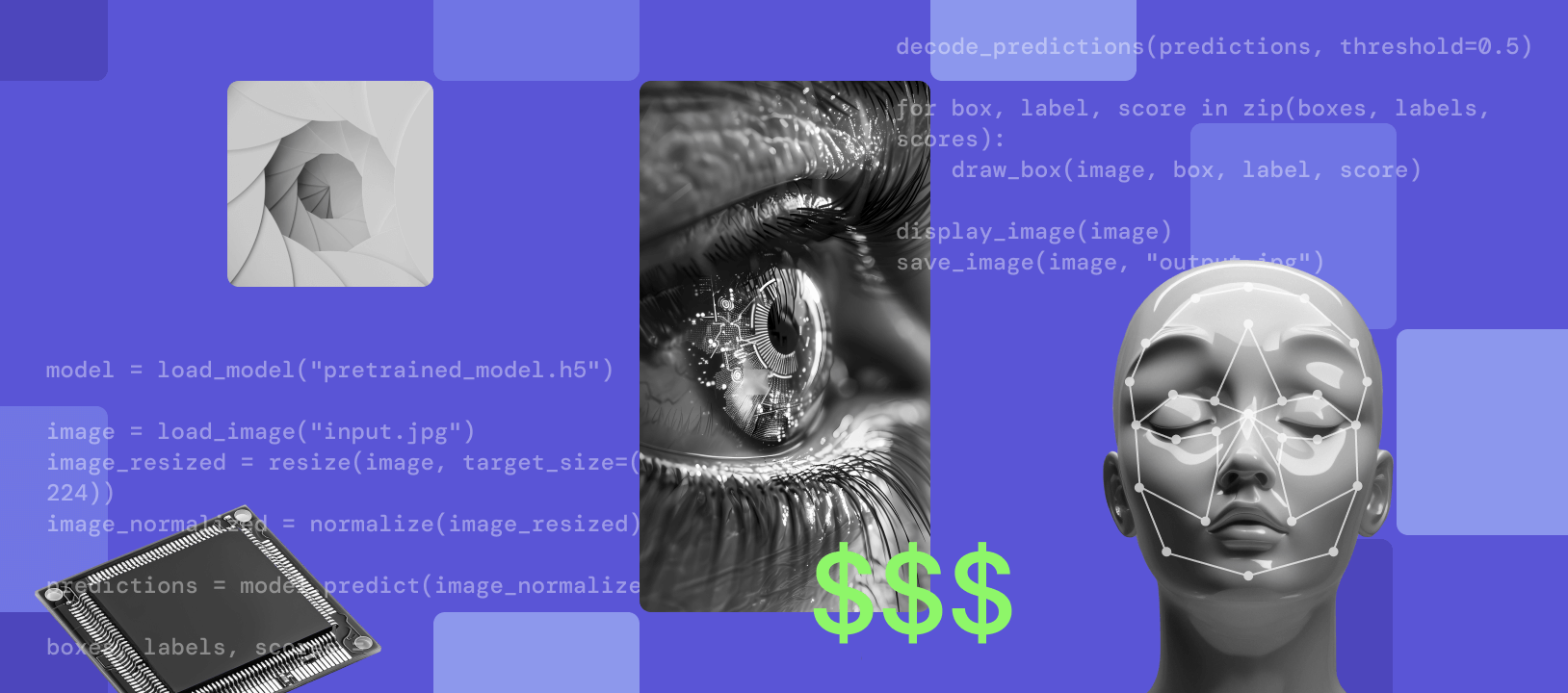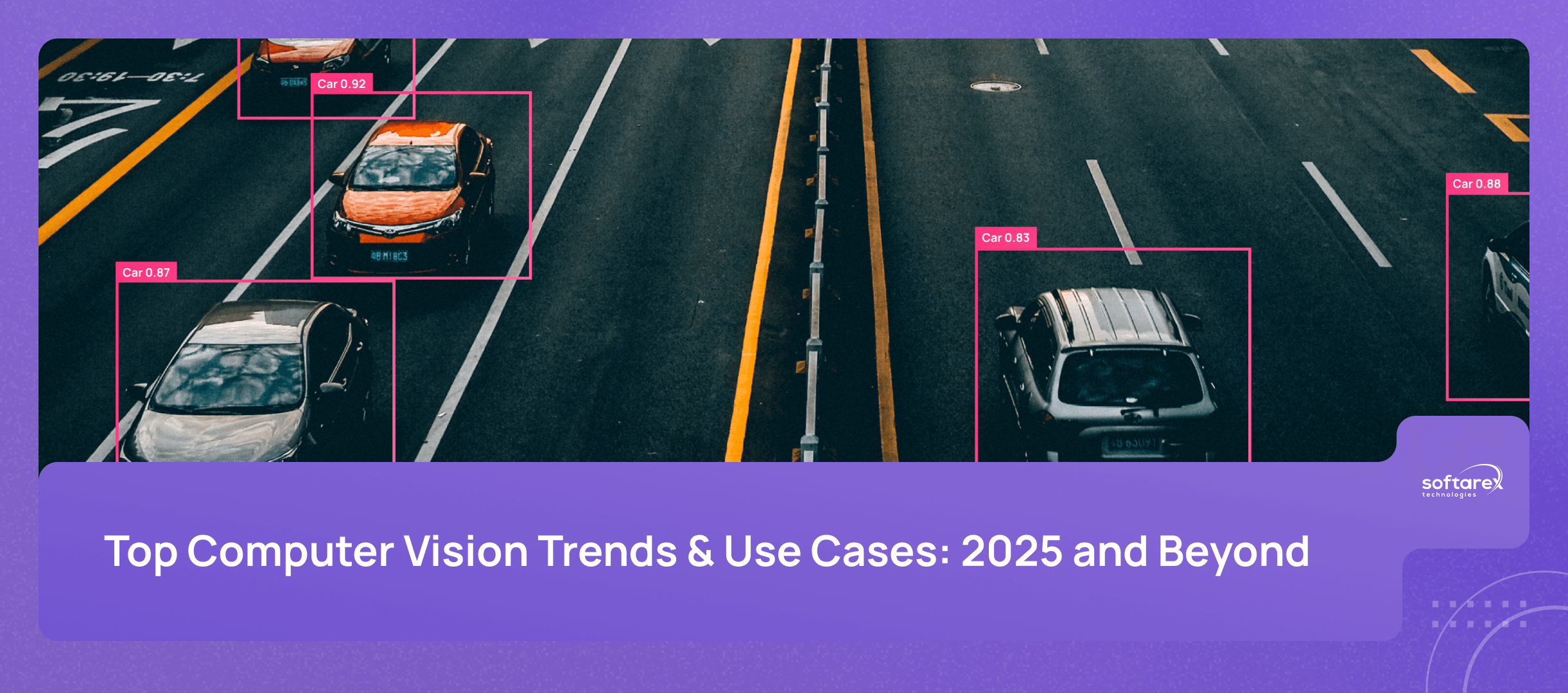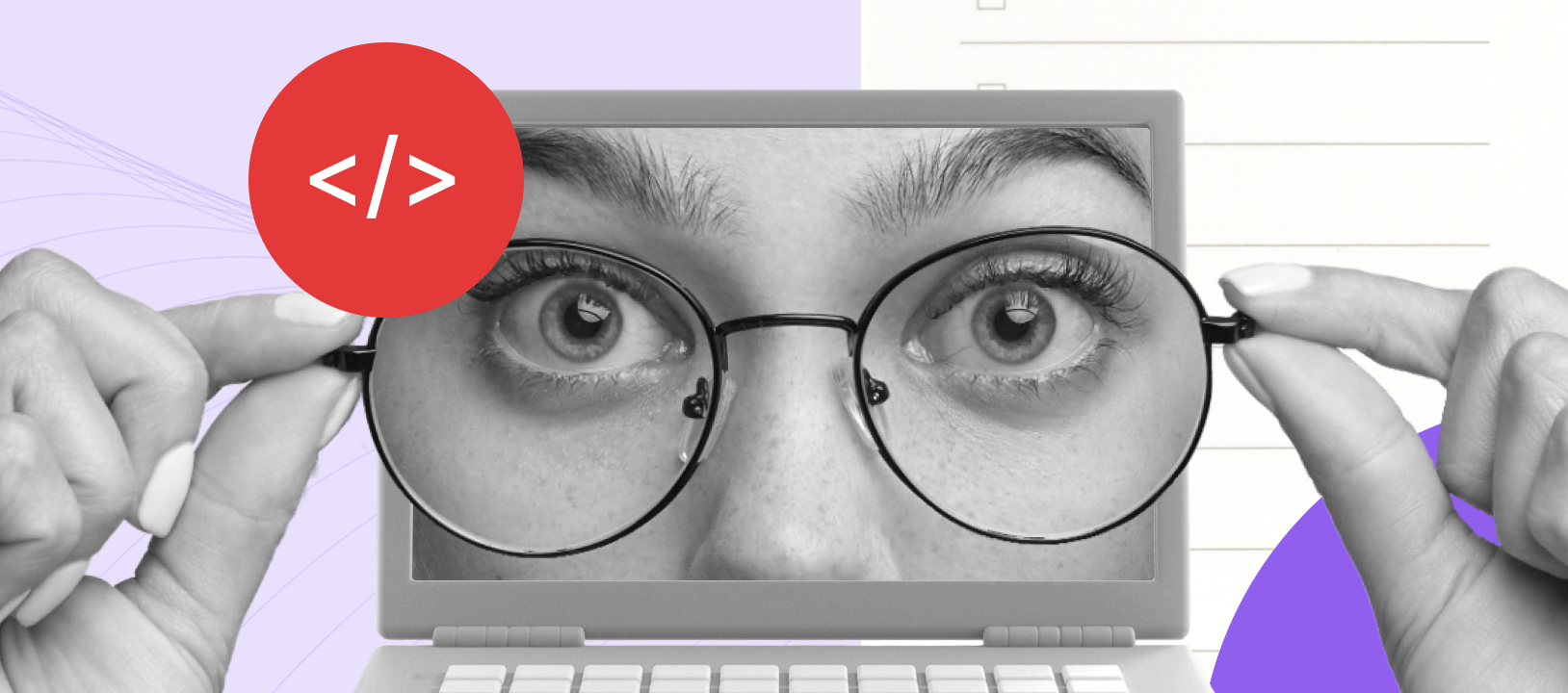Interest in computer vision software is undeniably high, with the global market expected to grow at a CAGR of 7.8% to 2031, reaching a total value of $23.79 billion. Organizations that consider implementing Computer Vision in the mid- to long-term are mainly attracted by its promise of increased efficiency, improved customer experience and significant competitive advantage.
Its applications span multiple industries, including healthcare, retail, manufacturing, transportation, sports, agriculture, logistics, security and more. In medical imaging, for example, computer vision solutions can process vast amounts of data from CT, MRI and X-ray scans, enabling faster and more accurate diagnoses of conditions such as heart disease. In warehouse management, computer vision-based systems can streamline processes such as package verification, dimensional analysis, and shipment planning. In security, computer vision can analyze video footage in real time to detect intrusion events far more efficiently than manual surveillance.
But for all its potential, computer vision comes with a price tag that is giving many organizations pause. What are the key drivers behind these costs? How do you calculate the true return on investment? This comprehensive guide will give you the insight you need to navigate the financial landscape of computer vision and make strategic, cost-effective decisions for your business.
Vision AI Pricing by Industry
The overall cost of implementing computer vision can vary significantly depending on the industry and specific use case. For example, healthcare applications may require more stringent data privacy and regulatory compliance measures, driving up implementation and ongoing costs. On the other hand, retail businesses may prioritize faster deployment and lower hardware requirements for in-store deployments.

Computer Vision Implementation: Main Cost Components
Hardware & Infrastructure
Hardware and infrastructure represent a significant cost component in computer vision implementations, primarily split between acquisition devices and processing infrastructure. On the hardware side, modern computer vision cameras (CCDs) range from $30 to $3,500, with costs varying based on specifications such as resolution (2-21 megapixels), color capabilities, and image transfer speeds. The total hardware investment depends on factors such as environmental conditions, camera placement strategy and specific application requirements.
For processing infrastructure, organizations can choose between cloud-based and edge computing deployments. Cloud solutions, using services such as AWS Rekognition or Azure Cognitive Services, offer flexibility and lower initial investment, but can lead to escalating costs with increased processing volumes and potential latency issues. While edge computing requires a higher upfront hardware investment for local processors or AI accelerators, it often proves more cost-effective for large-scale deployments by eliminating ongoing API fees and reducing latency. This approach is particularly beneficial for applications requiring real-time processing or handling sensitive data.
The optimal infrastructure choice depends on project size, performance requirements and long-term scalability needs, with many organizations adopting hybrid approaches to balance cost efficiency and performance.
Software
Software is a critical cost factor in computer vision systems, as it enables complex image processing and algorithmic tasks. Here are the primary software-related cost considerations:
Software Frameworks and Tools
Open source frameworks such as TensorFlow, PyTorch and OpenCV provide a flexible and cost-effective foundation for computer vision projects. These tools provide access to source code and extensive community resources, making them ideal for teams that require customisation and want to manage budgets effectively. However, they may require more in-house expertise for implementation and long-term maintenance.
In contrast, proprietary solutions such as MATLAB and Amazon Rekognition tend to be more turnkey, with extensive support, robust features, and easy-to-use interfaces. These options often come with licensing fees and additional support costs that should be factored into your budget. While proprietary software ensures reliability and customer support, it may offer limited customisation compared to open source alternatives.
When choosing the right software, it’s important to assess your team’s technical skills and the long-term maintenance requirements of your project. Open source tools can offer significant savings and greater flexibility, but may require more resources to manage and update. At the higher end, enterprise-grade computer vision software with advanced features and seamless integration can improve efficiency, but comes at a premium. Beyond initial licensing or subscription fees, consider ongoing costs such as cloud hosting, software updates, and any necessary customisation or integration.
Algorithm Selection
The choice of algorithms and models affects both functionality and cost. Advanced models with high accuracy rates – such as deep neural networks – require more processing power and storage, often using cloud services or GPUs, which adds to the cost.
Lightweight models such as TensorFlow Mobile and OpenPose Lite are less resource-intensive and suitable for mobile devices. However, they may compromise accuracy compared to heavier models such as CoCa or BASIC-L, which offer superior accuracy but are more expensive to deploy and operate at scale.
Software Complexity
The complexity of computer vision software has a direct impact on development costs. Software complexity goes beyond just the algorithms used, and refers to the overall scale, interdependencies, and sophisticated technologies required to build robust computer vision applications. Basic AI vision software starts at around $30,000, while medium complexity solutions start at $55,000. Advanced systems with high accuracy can exceed $90,000 as they require longer development times, significant computing resources, storage and specialized expertise, all of which can further increase the overall project cost.
Data Collection and Training
This phase includes costs for data acquisition (either in-house or purchased), data annotation, and computational resources for model training. The annotation process, which involves labeling data to teach AI systems to recognize important features, typically requires significant human effort and can account for a large portion of the budget – sometimes exceeding the actual model development costs. Computing costs include cloud storage and GPU resources required for training. The final cost varies significantly depending on the data acquisition method chosen and the quality of annotation required, with high-quality annotation processes commanding premium prices but delivering better model accuracy and performance.
Implementation
The cost of implementing computer vision systems is primarily driven by three critical factors: engineering expertise, system integration, and security measures. Due to the high demand and limited availability of computer vision specialists – including engineers, AI consultants and solution architects – assembling even a small team requires significant investment in competitive compensation packages. Integration complexity stems from the need to merge disparate components (machine learning platforms, cloud services, IoT systems) with existing enterprise infrastructure, while avoiding technology lock-ins and isolated silos. This often requires extensive customisation and careful consideration of functionality gaps that could lead to unexpected costs. Implementing security, while expensive, remains critical to protecting sensitive image data and intellectual property, requiring investment in infrastructure hardening, encryption and continuous monitoring.
ROI and Cost-Benefit Analysis
Quantifying the return on investment (ROI) for computer vision projects can be challenging, as the benefits often go beyond immediate savings. To assess ROI over time, consider breaking it down into both immediate gains and longer-term benefits:
- Immediate Gains: These often include reduced operational costs through automation, higher accuracy in quality control, and improved speed in detecting defects or errors.
- Long-Term Benefits: These benefits may take longer to quantify but can have a significant cumulative impact. They may include improved customer satisfaction, increased brand reputation, or even access to new revenue streams through enhanced capabilities.

Computer Vision Project Kickoff Checklist
Launching computer vision and visual deep learning projects requires significant upfront effort. Adopting a structured, scalable strategy can streamline the process and lay the foundation for success. To help you kick things off, we’ve created the ultimate Computer Vision Project Kickoff Checklist – perfect for jumpstarting your project discussions and planning. You can download it for free by filling out the form on this article page.
Take the Next Step with Computer Vision
Implementing a computer vision project is both challenging and transformative for your business. While technical expertise is important, success ultimately depends on clear objectives, quality data and strategic planning from day one. By following the cost considerations and implementation steps in this guide, you’ll be better equipped to launch a vision project that delivers real value. Remember that your first project may require iterations and adjustments – this is normal and part of the learning process. When you’re ready to move forward with your computer vision initiative, Softarex’s team of experts can provide the guidance and technical expertise you need to turn your vision into reality. Contact us today to discuss your computer vision project requirements.








